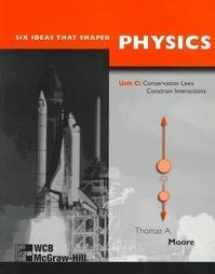
Six Ideas That Shaped Physics : Unit C : Conservation Laws Constrain Interactions
Book details
Summary
Description
Author Tom Moore uses a unique blend of standard and contemporary physics to create this remarkable new set of introductory physics textbooks. This new approach to the two or three semester calculus-based introductory physics course was developed with the support of the Introductory University Physics Project (IUPP) and represents the culmination of over seven years of development, testing, and evaluation at Pomona College. Six Ideas That Shaped Physics is consistent with the three basic principles of the IUPP: 1) The pace of the introductory course should be reduced so that a broader range of students can achieve an acceptable level of competence and satisfaction; 2) there should be more contemporary physics in the course; and 3) the course should use one or more "story lines" to help organize ideas and help motivate student interest. The author adds three principles of his own to help "round-out" this exceptional new outlook: 4) The course should seek to embrace the best of what educational research has taught us about conceptual and structural problems with the standard course; 5) the course should stake out a middle ground between the standard introductory course and exciting but radical courses that require a substantial investment in infrastructure and/or training; and 6) the course should be useful in fairly standard environments and should be easy for teachers to understand and adopt. This carefully organized system of learning proves extremely effective because students gain confidence as they proceed to more difficult concepts.


We would LOVE it if you could help us and other readers by reviewing the book
Book review



